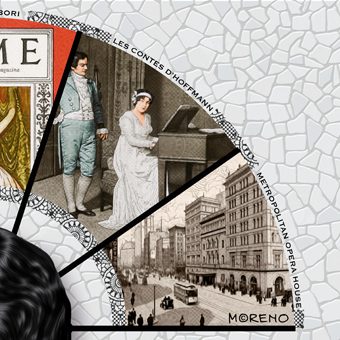Conductor
Fabio Biondi
Artistic Concept
Emilio López
Piramo
Vivica Genaux
Tisbe
Valentina Farcas
The Father
Emanuele D’Aguanno
Based on a story from Ovid’s Metamorphoses, the piece Intermezzo Tragico a Tre Voci Piramo e Tisbe, composed by Johann Adolf Hasse with a libretto by Marco Coltellini, portrays the last day in the lives of the two young protagonists, inhabitants of the city of Babylon and children of two warring families that had formerly been allies. For this reason, the parents of Pyramus and Thisbe, who at first approved of the budding love between their children, now want to prevent the relationship just as the two young lovers have become most enamored. In Ovid’s tale, after their love was banned, Pyramus and Thisbe were only able to communicate through a narrow hole in a wall meant to separate their bodies and snuff out their desires. In the Intermezzo Tragico, their amorous despair has already come to the point that the tiny groove in the wall has become a crevice carved out by Pyramus, who manages to squeeze through it and present himself in body and soul before Thisbe, just after her father has announced her impending marriage to another man. Knowing that such a union will separate them forever, Pyramus encourages the girl to escape with him to where neither their families nor the laws of Babylon will reach them. Thisbe, with fear and some regret, accepts the plan. When night falls, they will both flee and meet each other in the thicket of the forest surrounding the city, near the tomb of King Nino.
Night falls and Thisbe escapes from her house. She is the first to arrive at the appointed spot, a shady forest of cypress trees and other mournful plants, which seem to come to life under the moonlight. In the center of it all lies Nino’s tomb. The girl, alone and fearful, clutches a richly decorated casket of precious stones that Pyramus has given her; on her head she wears a veil with letters embroidered in gold.
While she waits for her lover to come, she hears a noise close-by that fills her with dread. Thisbe flees, dropping the casket and the veil. The noises, it turns out, are the roars of an enormous lion, which appears on Nino’s tomb, covered in the blood of some recent kill. The beast finds the veil on the ground and, in a fury, it rips the veil to shreds, covering it with blood in the process, before quenching his thirst in a nearby fountain. The animal then disappears.
Pyramus arrives at Nino’s tomb, but does not find Thisbe there. Looking around him, he finds the remains of the victims of some ferocious beast; he also sees the small casket lying on the ground — the precious gems scattered all around — and the veil embroidered in gold, torn and bloodstained. For Pyramus, all these images point to Thisbe’s terrible death in the jaws of the beast. Full of despair, he stabs himself with his dagger and falls onto the grave. Soon, however, Thisbe returns to the spot and finds Pyramus dying. The lovers can only exchange a few words before Pyramus dies and then Thisbe kills herself with the same dagger. When the girl’s father, accompanied by a group of armed men, follows the girl’s trail into the forest, they burst onto the scene only to find the young lovers both dead on Nino’s tomb. Full of remorse and regret, Thisbe’s father stabs himself and falls next to them, albeit with enough life left in him that his men take his moribund body away.




